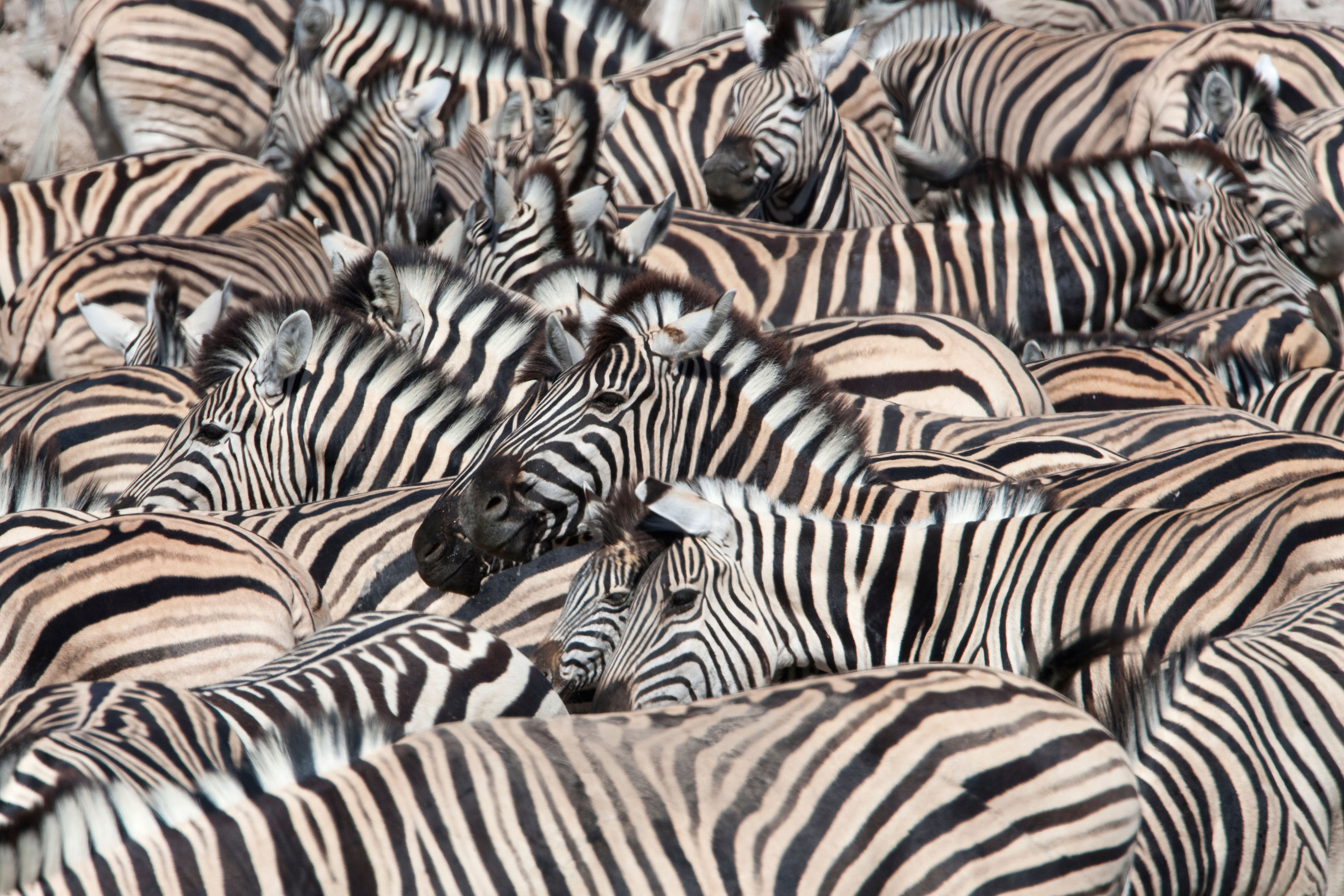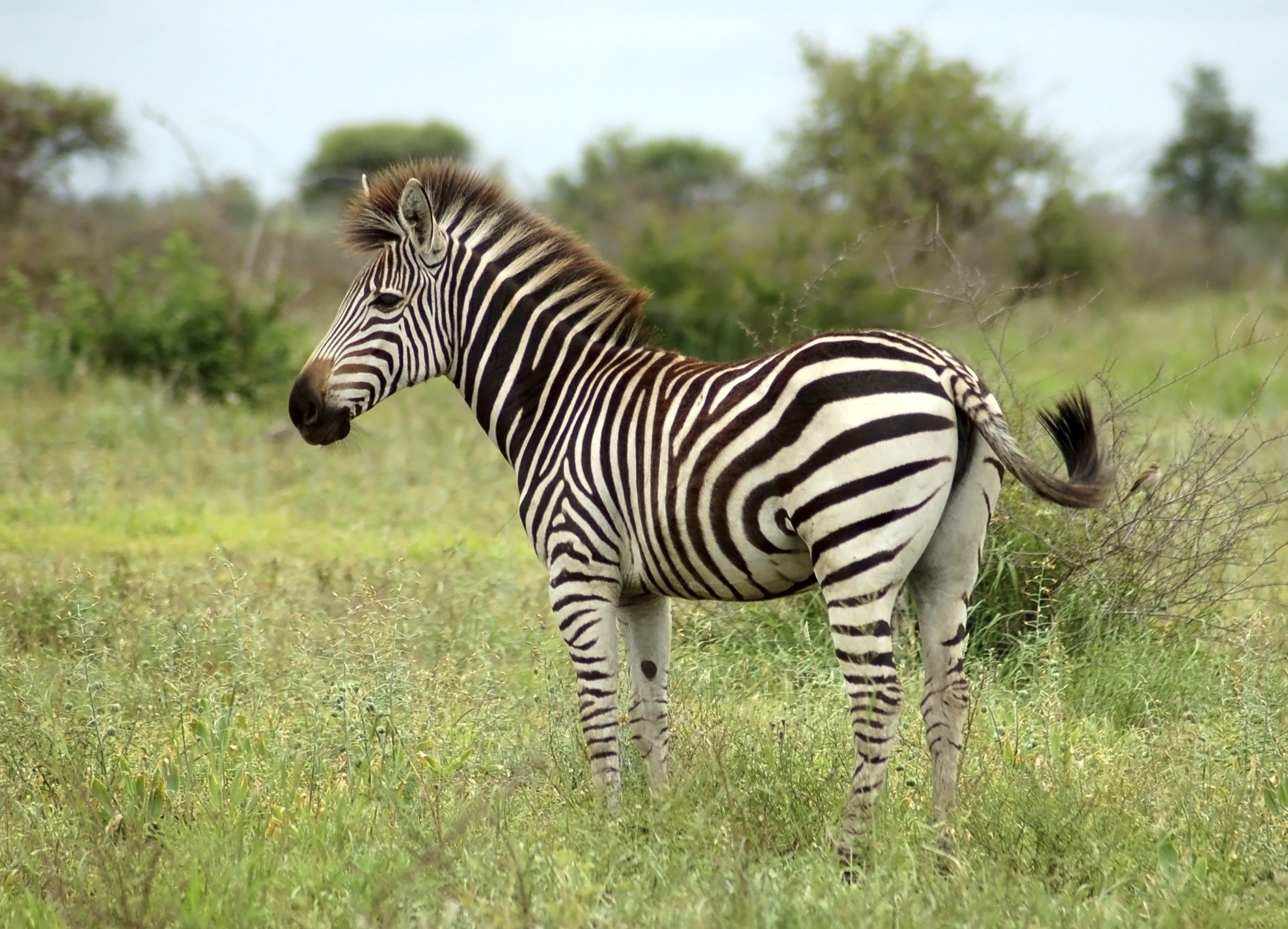Zebra is a striped member of the horse family. There are three species–the common zebra, Grevy’s zebra, and the mountain zebra. They live in herds in the deserts and savanna of eastern and southern Africa.
A zebra has alternating white and black or dark brown stripes. Each of the three species of zebras has a distinctive stripe pattern. In addition, much like fingerprints in human beings, no individual zebra’s stripes are identical to those of another zebra. The stripes are thought to provide camouflage, especially at night and in dim light. The stripes may make it difficult for predators (hunting animals) to single out individuals from the herd. Also, the stripes help repel biting flies, specifically horseflies and tsetse flies. The stripes seem to disorient the vision of the flies.
Loading the player...Zebra
A zebra eats grass. It may also eat bark, leaves, buds, fruits, and roots. A zebra spends most of its time eating.
The main predators of zebras include lions, hyenas, leopards, and cheetahs. Zebras protect themselves from predators by keeping together in the herd. At least one member of a herd remains alert to danger at all times. A zebra’s large ears rotate to locate sounds, and its night vision is as good as an owl’s. If attacked, a zebra usually tries to run away. Zebras can run at speeds of up to 40 miles (65 kilometers) per hour. Zebras may live up to 22 years in the wild.

A zebra herd may range in size from a few individuals to several hundred. Most herds include smaller groups that consist of a male, several females, and their young. Young males often form herds with no females.
Although zebras seldom fight, competition among males for a particular female during the breeding season may become intense and involve pushing, biting, and kicking. Females become sexually mature at the age of 3 and may reproduce throughout the rest of their life. Most males begin mating at about 5 years of age.

The female zebra carries a single young, called a foal, inside her body for about a year before giving birth. A newborn foal weighs 70 to 80 pounds (32 to 36 kilograms). It can stand within an hour after birth. In a few days, the young zebra begins eating grass. It may gain up to 1 pound (0.45 kilograms) a day for the next two months.

Zebras face an uncertain future in the wild. They must compete with ranchers and farmers for grazing land and scarce water resources. Many zebras have been killed for their meat and their hides. Only the common zebra is still numerous. Both Grevy’s zebra and the mountain zebra are endangered. A fourth kind of zebra, the quagga, became extinct in the late 1800’s.
